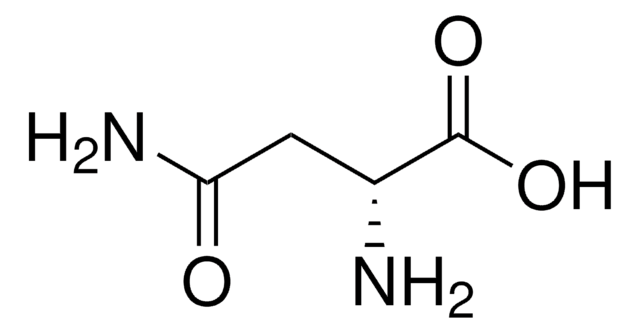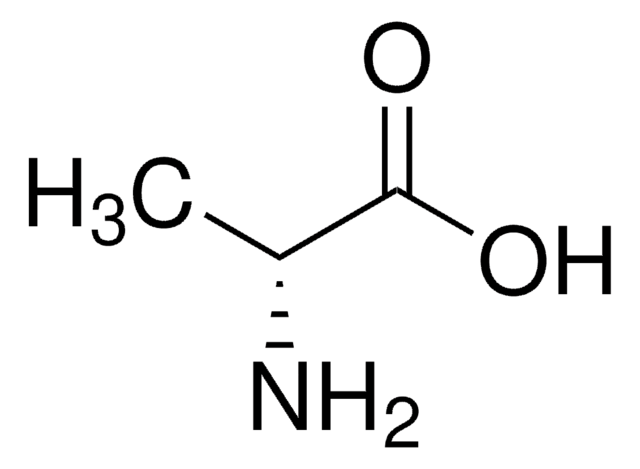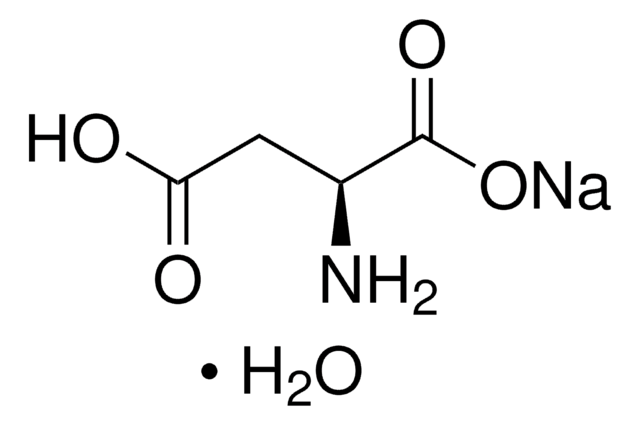Kluczowe dokumenty
219096
D-Aspartic acid
99%, for peptide synthesis, ReagentPlus®
Synonim(y):
(R)-(−)-Aminosuccinic acid, (R)-2-Aminosuccinic acid
About This Item
Polecane produkty
Nazwa produktu
D-Aspartic acid, ReagentPlus®, 99%
Poziom jakości
linia produktu
ReagentPlus®
Próba
99%
Formularz
powder
aktywność optyczna
[α]20/D −24°, c = 2.3 in 6 M HCl
czystość optyczna
ee: 98% (GLC)
przydatność reakcji
reaction type: solution phase peptide synthesis
mp
>300 °C (lit.)
Zastosowanie
peptide synthesis
ciąg SMILES
N[C@H](CC(O)=O)C(O)=O
InChI
1S/C4H7NO4/c5-2(4(8)9)1-3(6)7/h2H,1,5H2,(H,6,7)(H,8,9)/t2-/m1/s1
Klucz InChI
CKLJMWTZIZZHCS-UWTATZPHSA-N
informacje o genach
rat ... Slc1a3(29483)
Szukasz podobnych produktów? Odwiedź Przewodnik dotyczący porównywania produktów
Zastosowanie
- Analiza metabolomiczna identyfikuje zróżnicowane metabolity jako biomarkery ostrego zawału mięśnia sercowego...: Badanie to wykorzystuje metabolomikę do identyfikacji biomarkerów ostrego zawału mięśnia sercowego, pokazując rolę kwasu D-asparaginowego w metabolizmie aminokwasów i potencjalnych zastosowaniach diagnostycznych. (Zhou et al., 2024).
Informacje prawne
Zastosowanie
Kod klasy składowania
11 - Combustible Solids
Klasa zagrożenia wodnego (WGK)
WGK 1
Temperatura zapłonu (°F)
Not applicable
Temperatura zapłonu (°C)
Not applicable
Środki ochrony indywidualnej
Eyeshields, Gloves, type N95 (US)
Wybierz jedną z najnowszych wersji:
Masz już ten produkt?
Dokumenty związane z niedawno zakupionymi produktami zostały zamieszczone w Bibliotece dokumentów.
Klienci oglądali również te produkty
Chromatograms
application for HPLCGlobal Trade Item Number
| SKU | GTIN |
|---|---|
| 219096-100G | 4061833540534 |
| 219096-25G | 4061838775818 |
Nasz zespół naukowców ma doświadczenie we wszystkich obszarach badań, w tym w naukach przyrodniczych, materiałoznawstwie, syntezie chemicznej, chromatografii, analityce i wielu innych dziedzinach.
Skontaktuj się z zespołem ds. pomocy technicznej









